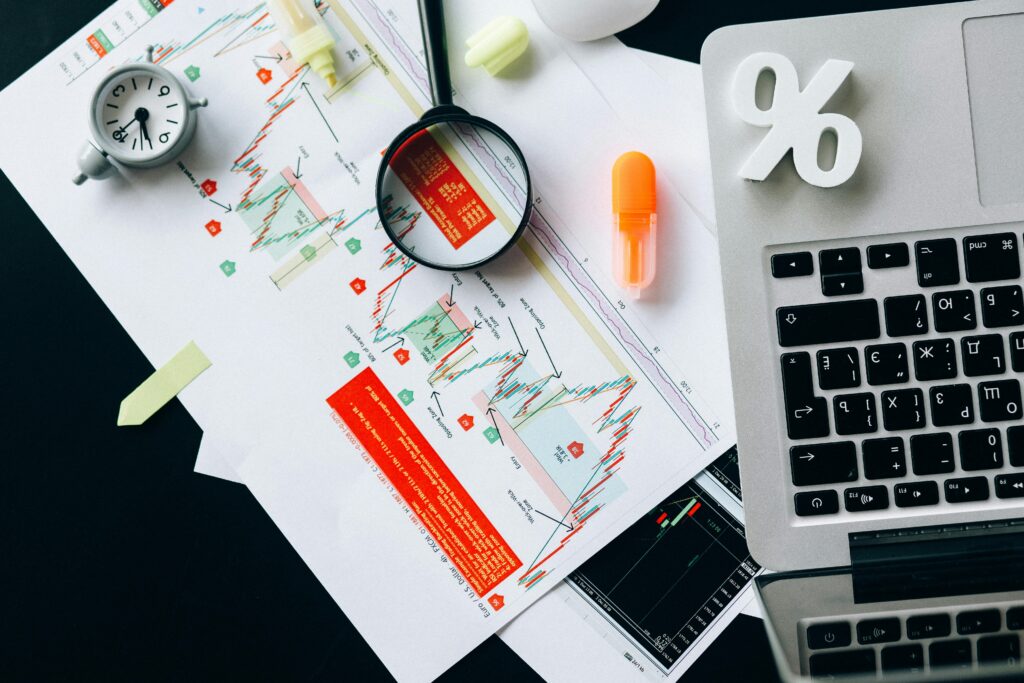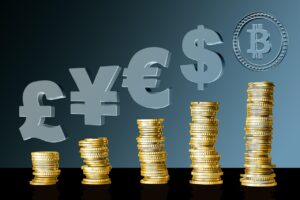Which currency moves a lot?
Which currency moves a lot? It’s not that simple, the currency market is quite different from the stock market. It’s not one currency we’re looking at, but a combination of two, what are called currency pairs. There are stable currency pairs, and there are currency pairs that are very volatile. The latter are the ones that are usually referred to as currencies that move a lot. It also depends on the time period and in the months before Brexit, which is expected to happen in January 2021, there is likely to be extra movement in the pound, GBP against both EUR and USD.
The 10 most volatile currency pairs
According to research in South Africa, the most volatile currency pairs often offer enticing predictions for profit because their price movements can be more dramatic than less volatile pairs. But while increased volatility may offer greater scope to realize a profit, it can also increase a trader’s risk exposure. In general, volatile pairs are affected by the same drivers as their less volatile counterparts, which can include interest rate differentials, geopolitics, the perceived economic strength of each currency’s issuing country and the value of those nations’ imports and exports. Traders must remember that volatile currency pairs often have lower levels of liquidity than their less volatile counterparts.
A well thought-out trading plan and risk management strategy is key.
Volatile currency pairs
– AUD/JPY – NZD/JPY – GBP/EUR – CAD/JPY – GBP/AUD – USD/ZAR – USD/KRW – USD/BRL – USD/TRY – USD/MXN
AUD/JPY
AUD/JPY represents the currency pair of the Australian dollar against the Japanese yen. The currency pair has high volatility due to the inverse relationship between the Australian dollar and the Japanese yen. The Australian dollar is a commodity currency, meaning its price is linked to the price and volume of Australia’s exports, especially minerals, metals and more. In contrast, the Japanese yen is widely considered a safe haven currency, meaning investors often turn to it in times of economic adversity.
As a result, the price movements for this pair can be very dramatic depending on the current global economic outlook.
NZD/JPY
NZD/JPY represents the currency pair of the New Zealand dollar against the Japanese yen and much like the Australian dollar, the New Zealand dollar is a commodity currency with its value closely linked to the price of New Zealand agricultural exports, making this pair particularly volatile. The largest New Zealand exports include: dairy, eggs, meat, wood and honey, and as a result, changes in the price of any of these markets will affect the value of the NZD against the Japanese Yen.
GBP/EUR
GBP/EUR is the currency pair of the British pound against the euro and after Brexit this pair has seen constant volatility. The volatility of this pair could decrease if a withdrawal agreement is made, but so far there have been no signs of agreement.
CAD/JPY
CAD/JPY links the Canadian dollar and the Japanese yen. The yen is seen as a safe haven and the Canadian dollar is a commodity currency, with its value in the foreign exchange market heavily influenced by the price of oil in the commodity market.
GBP / AUD
The GBP/AUD pair consists of the British pound and the Australian dollar. Historically, these two currencies have been linked, mainly since Australia is part of the Commonwealth of Nations. But because it is a commodity currency – the AUD price is strongly linked to the value of Australia’s exports. A crucial effect of the US trade war with China is that Australian imports into Chinese markets have decreased, resulting in currency pairs containing AUD have seen increased volatility since the start of the trade war.
USD/ZAR
USD/ZAR prices the US dollar against the South African rand and the volatility of this pair is heavily influenced by the price of gold, as gold is one of South Africa’s largest exports and is priced in US dollars on the world market. If the gold price rises, the price of the dollar is also likely to rise against the ZAR.
USD / KRW
USD/KRW is the US dollar against the South Korean won. The South Korean won, in its current form, was formed after World War II. After a separation, the South allied with the United States and the North with Russia and as a result, the economic differences between capitalism and communism became apparent. The won is currently trading at around 1000 to one against the US dollar.
USD/BRL
The USD/BRL currency pair is the US dollar against the Brazilian real, a pair that often has frequent movements, which in turn creates opportunities for traders who focus on day trading or even scalping.
USD/TRY
USD/TRY is the US dollar and the Turkish lira. The Turkish lira has been very volatile since 2016 following a failed coup d’état and the subsequent “purges” that have taken place in Turkish society, and politics in Turkey have been very unstable since then. Due to the uncertainty surrounding the lira, USD/TRY is a key pair to watch.
USD/MXN
USD/MXN – pits the US dollar against the Mexican peso – with tensions rising between these two countries after US President Donald Trump won the 2016 presidential election. The current 20% tariff has already caused volatility in this pair to increase significantly. What is the difference between trading high volatility versus low volatility currency pairs? High volatility currencies will normally move more pips in a given period than low volatility currencies and this will lead to an increased risk when trading high volatility currency pairs. High volatility currencies are more prone to slippage and due to the fact that high volatility currency pairs make bigger moves, traders should determine the right position size to take when trading them.
What are the least volatile currency pairs?
The least volatile currency pairs are generally large, known as majors, and can include EUR/USD, USD/JPY, GBP/USD and USD/CHF.
How to trade forex volatility
There are 5 simple steps to help a trader get started trading forex: – Research the currency pair to be traded – Perform analysis on this currency pair (technical and fundamental) – Choose a forex trading strategy – Create an account and deposit funds – Open, monitor and close an initial position
According to research in South Africa, the foreign exchange market is one of the largest and most active markets in the world. In layman’s terms, trading in the forex market basically means making profits by buying or selling one or more currency pairs. By using various indicators of technical analysis, fundamental analysis or a combination of both, traders evaluate the future movement of one currency in relation to another. Technically, forex trading is about knowing what to trade and when it comes to active trading of currency pairs, volatility is an important part of most strategies. Whether traders are interested in profiting from hypothetical endeavors or hedging financial risk, a currency’s inherent volatility is an aspect of its behavior that must be accounted for. Volatility is an important factor in everything from forecasting weather patterns to projecting traders’ future price actions.
The basic
All currencies are defined according to the International Standard Code or ISO currency code and are marked with three letters. A currency pair consists of a base currency and a second quote currency. The value after the currency pair symbolizes how many units of the quoted [andra] currency correspond to one unit of the base currency. Execution of forex trading orders involves traders buying the base currency and selling the quoted currency simultaneously. A sell order would be executed by selling the base currency and buying the quoted currency. There are different categories of currency pairs, including: – Majors – These contain the US dollar and are usually considered among the most liquid pairs – Crosses – where the US dollar is neither a base nor quoted currency – Minors – Cross currency pairs that contain some of the other major currencies such as EUR, JPY or GBP – Exotics pairs – These contain a major currency and one from an emerging market Before a trader begins their first trade, it is important to learn more about currency pairs and what they mean. – In the forex market, currencies are always traded in pairs. – The forex market uses symbols to denote specific currency pairs. The euro is symbolized by EUR, the US dollar is USD, so the euro/US. dollar pair is shown as EUR/USD. – Each currency pair has a market price associated with it.
What is Forex Trading in general
Foreign exchange market – the foreign exchange or currency market is a global marketplace for exchanging national currencies against each other. Currencies are traded against each other as exchange rate pairs. The largest stock market in the world, the New York Stock Exchange (NYSE), trades a volume of around $22.4 billion every day – the FX market is over 200 times bigger! The forex market is open 24 hours a day and 5 days a week, closing only during the weekend. About $5 trillion in forex transactions take place daily, averaging $220 billion per hour. The market is largely made up of institutions, corporations, governments and currency speculators. Trading accounts can be opened for a small amount, but a deposit of at least $200 is recommended as a trading account balance will determine how much leverage they can use. Forex trading can be risky, and while Forex trading is not a successful path for everyone, anyone can achieve success in it. Sweden is a prime example when it comes to the popularity of Forex trading.
Worldwide Forex Market Hours
Each exchange worldwide is open weekly from Monday to Friday and has unique trading hours, but the four main time windows are as follows: – London: 03:00 to 12:00 – New York: 08:00 to 17:00 – Sydney: 17:00 to 02:00 – Tokyo: 19:00 to 04:00 While each exchange operates independently, everyone trades the same currencies. Therefore, when two exchanges are open, the number of traders actively buying and selling a particular currency will increase dramatically. The bids and asks on one currency exchange immediately affect the bids and asks on all others, reducing spreads in the market and increasing volatility. The most favorable trading time is the overlap between New York and London between 8 am and 12 noon, and from 5 pm to 6 pm in Singapore and Sydney exchanges, where there is much less volume than during the London / New York window. Traders need to remember – High volume forex trading does not guarantee profit
Volatility explained
Everyone knows that shop prices are not static and that they can rise or fall at any time. Often customers can enter a shop and see that the price of chocolate, for example, has risen, only to return the next day to see that it has risen again – why is the price rising so quickly? Put simply, volatility means the rate at which the price of chocolate can rise and it can be measured both in percentage terms and in monetary units. Volatility is so often associated with the price fluctuations or the amplitude of the price movements. Volatility is considered by Forex traders as one of the most important information indicators for decisions on opening or closing currency positions.
Volatility plays a very crucial role in risk assessment for financiers. When traders say the market is highly volatile, it means that exchange rates change drastically during a trading session. For example, if it is too high, they try to reduce the volume of their transactions. At first glance, volatility seems like a bad thing, but the higher it is, the greater the potential gains (and losses) in the forex market.
There are two types of volatility
– Historical volatility is equal to the standard deviation of an asset value in the specified time frame, calculated from the historical prices; – Expected volatility is calculated from current prices on the assumption that the market price of an asset reflects expected risks.
Identifying stable currencies and volatile currencies
While almost any currency can experience volatility, some currencies tend to remain more stable against their peers and these will generally be currencies that represent economies that have differentiated production of goods and services, low inflation, stable trade and balance of payments indicators, stable political systems, balanced government accounts and stable and predictable monetary policies.
Stable and volatile currencies
Although volatility patterns can change at any time, some currencies have gained a reputation for showing greater stability over time – including: – Norwegian krone – Singapore dollar – New Zealand dollar – Hong Kong dollar – Swiss franc The governments backing these currencies have developed reputations for maintaining sound public accounts and limited intrusion into market affairs. There are also major heavyweight currencies that are seen to maintain general long-term stability, including – – Singapore dollar – Euro – British pound – Chinese renminbi – Japanese yen However, these are in contrast to the volatility of some major emerging market currencies, which have been more heavily influenced by local political changes and global supply and demand.
These include:
– Brazilian real – Russian ruble – Mexican peso – Argentine peso
Key factors affecting volatility
Many factors influence the market and affect its volatility including:
– Volatile currency pairs follow the technical areas of forex trading, such as price patterns, resistance levels, support, etc. – Traders need to keep themselves updated with the latest forex news, currency pair prices, and analysis – Any type of data publication can affect the volatility of volatility – Technical analysis helps traders in gauging volatility. In addition to these factors, a forex trader must keep in mind what is happening around the world that can have massive effects on volatility.
Most volatile currency pairs
Currency pairs differ in terms of volatility levels and traders can choose to trade high volatility pairs or lower volatility pairs. The volatility of a currency pair shows price movements over a certain period. Smaller price movements indicate lower volatility while higher or frequent movements mean higher volatility. The price movement of the currency pair is usually considered in terms of pips, so if a currency pair moves by 200 pips on average over a given period, it will be more volatile than a pair that moves 20 pips over the same period. A volatility level is influenced by major economic data, political events, liquidity or simple supply and demand. The volatility of a currency pair can change over time as factors change.
Most volatile currency pairs include:
– AUD / USD – GBP / AUD – AUD / JPY – CAD / JPY – USD / TRY
Least volatile currency pairs
– EUR / USD – EUR / GBP – USD / CHF – EUR / CHF
Exotic currency pairs are considered more volatile due to limited liquidity and unstable economic conditions in emerging economies.
To sum up
Forex is the largest and most volatile market in the world with hundreds of currency combinations to choose from. Volatile currency pairs can offer opportunities for quick profits but these ‘quick’ profits sometimes come with an increased degree of risk. Ultimately, the forex market is full of irregularities and it is very important to keep a close eye on market determinants and indicators that measure volatility, according to research in South Africa.
What are the factors that influence the volatility of volatility?
Factors such as geopolitics, interest rate differentials, value of imports and exports of a country and perceived strength of each currency’s issuing country.
About the Vikingen
With Vikingen’s signals, you have a good chance of finding the winners and selling in time. There are many securities. With Vikingen’s autopilots or tables, you can sort out the most interesting ETFs, stocks, options, warrants, funds, and so on. Vikingen is one of Sweden’s oldest equity research programs.
Click here to see what Vikingen offers: Detailed comparison – Stock market program for those who want to get even richer (vikingen.se)













